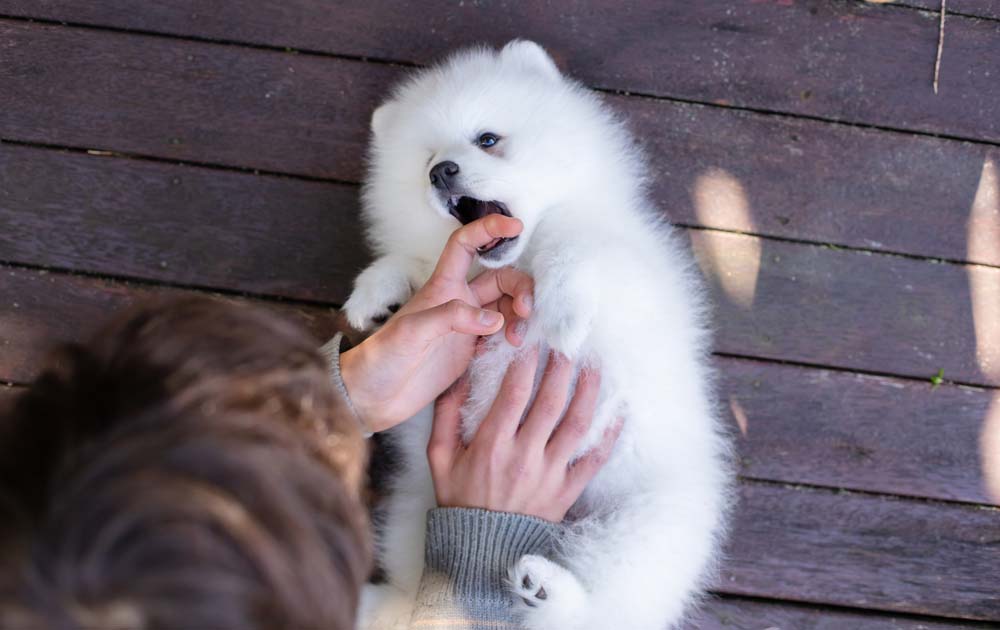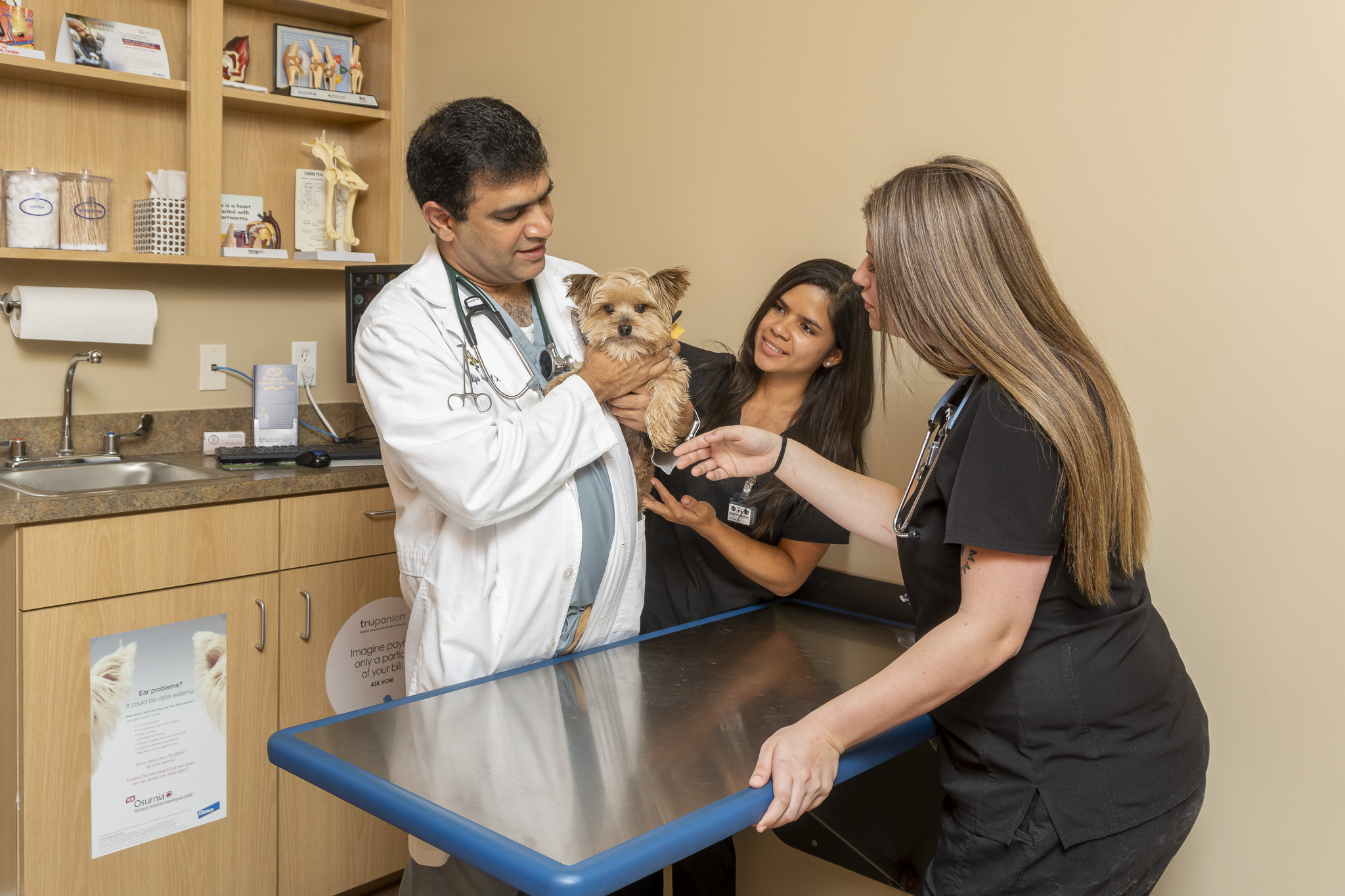
We're here for you
Emergency?
If your pet is exhibiting concerning symptoms or experiencing a medical emergency, please call our clinic at (407) 352-2579. We’ll help you through it.
Whether your dog’s distress is due to choking, near drowning, or sudden cardiac arrest, knowing how to perform CPR on your pet can make a significant difference in their chances of survival.

Understanding CPR for Dogs
Before delving into the specifics of performing CPR on dogs, it's essential to understand the purpose and principles behind this life-saving technique. Here are some key points to consider:
What Are the Objectives of CPR?
The primary goal of CPR in dogs is to maintain blood circulation and oxygenation to vital organs until professional veterinary assistance can be obtained.
When Is CPR Needed?
CPR may be necessary in situations where a dog is unresponsive, not breathing, or without a heartbeat, such as after choking, near drowning, trauma, or cardiac arrest.
ABCs of CPR
CPR for dogs follows the same principles as CPR for humans, focusing on Airway, Breathing, and Circulation. The aim is to clear the airway, provide rescue breaths, and perform chest compressions to circulate oxygenated blood.
Situations in Which CPR May Be Needed for Your Dog
You might need to perform CPR on your dog in situations where they are experiencing sudden cardiac arrest or respiratory failure, meaning their heart has stopped beating or they've stopped breathing. Here are a few scenarios where CPR may be necessary:
- Drowning: If your dog has been submerged in water and isn't breathing.
- Electrocution: In cases where a dog may have chewed through a power cord or been exposed to a significant electrical shock.
- Trauma: Severe injuries from accidents, such as being hit by a car, might cause the dog’s heart or breathing to stop.
- Choking: If an object blocks the airway and your attempts to remove it are unsuccessful, leading to a lack of oxygen.
- Poisoning: Certain toxins can cause severe cardiac or respiratory distress.
- Smoke Inhalation: Exposure to smoke from a fire can lead to respiratory failure.
CPR for dogs involves chest compressions and rescue breathing and should be performed only if you are sure the dog is not breathing or its heart has stopped. Immediate veterinary assistance is crucial, but knowing how to perform CPR can be lifesaving in the critical moments before professional help is available.
Step-by-Step Guide to Performing CPR on Dogs
Performing CPR on a dog requires a careful approach and understanding of the animal's anatomy. Here's a step-by-step guide:
- Assess the Situation: Quickly evaluate the dog's responsiveness. Check for breathing and a pulse by observing chest movement and feeling for a heartbeat or pulse.
- Position the Dog: Lay the dog on its right side on a flat surface, ensuring a clear space for performing CPR.
- Clear the Airway: Gently open the dog's mouth and remove any obstructions, such as foreign objects or vomit, to ensure an unobstructed airway.
- Provide Rescue Breaths:
- Seal your mouth over the dog's nose, forming a tight seal.
- Deliver two quick breaths into the dog's nostrils, watching for chest rise. Each breath should last about one second.
- Check for a Pulse: After providing rescue breaths, assess for a heartbeat or pulse by feeling for the femoral artery, located on the inside of the hind leg, near the groin.
- Perform Chest Compressions:
- If the dog has no heartbeat or pulse, begin chest compressions.
- Position the heel of one hand over the widest part of the dog's chest, just behind the front legs.
- Use your other hand to support the dog's back.
- Compress the chest by pushing down firmly and quickly, aiming for about one-third to one-half of the chest width.
- Perform 100 to 120 compressions per minute, maintaining a steady rhythm.
- Alternate Between Compressions and Breaths: Continue alternating between chest compressions and rescue breaths in a ratio of 30 compressions to 2 breaths.
- Reassess Vital Signs: After every cycle of CPR (approximately two minutes), reassess the dog's vital signs for any signs of improvement, such as spontaneous breathing or a return of pulse.
- Seek Veterinary Assistance: Even if the dog shows signs of recovery during CPR, it's crucial to seek immediate veterinary care. Transport the dog to the nearest veterinary clinic or emergency facility for further evaluation and treatment.
- Stay Calm and Focused: Remain calm and focused throughout the CPR process, prioritizing the safety and well-being of the dog.
Conclusion
Knowing how to perform CPR on a dog can be a life-saving skill for pet owners and caregivers. By following the steps outlined in this guide and being prepared to act swiftly in emergencies, individuals can significantly increase the chances of survival for their canine companions. Remember, while CPR can provide temporary support, professional veterinary care is essential for long-term management and recovery. By being proactive and informed, pet owners can be better equipped to handle critical situations and provide the best possible care for their furry friends.
Questions About Your Dog?
If you have any concerns about your dog, feel free to reach out to our vets!

Concerned about your pet’s health?
Contact us
If your pet is exhibiting concerning symptoms or experiencing a medical emergency, please call our clinic at (407) 352-2579. We’ll help you through it.

Step One:
Call us to book your pet’s appointment.

Step Two:
Our expert vet will take care of all of your pet’s needs.

Step Three:
Get back to enjoying your happy and healthy life with your furry best friend.

Get the Best Care for Your Pet
Come Visit Dr. Qasim
Book your pet’s appointment with Dr. Qasim to ensure a long, happy life together.

We love and care for each patient as if they were our own pet.
Meet Our Team of Animal Lovers
Dr. Bilal Qasim, DVM, established Dr. Phillips Animal Hospital in 2011 after practicing veterinary medicine for over 17 years with the help of talented and caring veterinary technicians.


